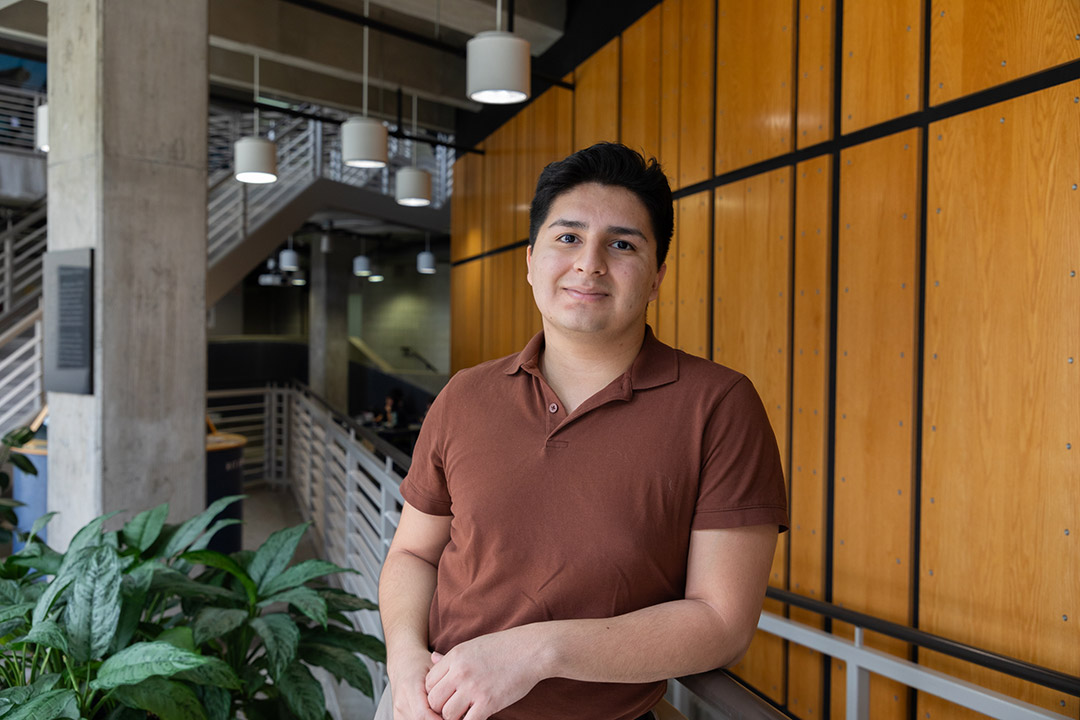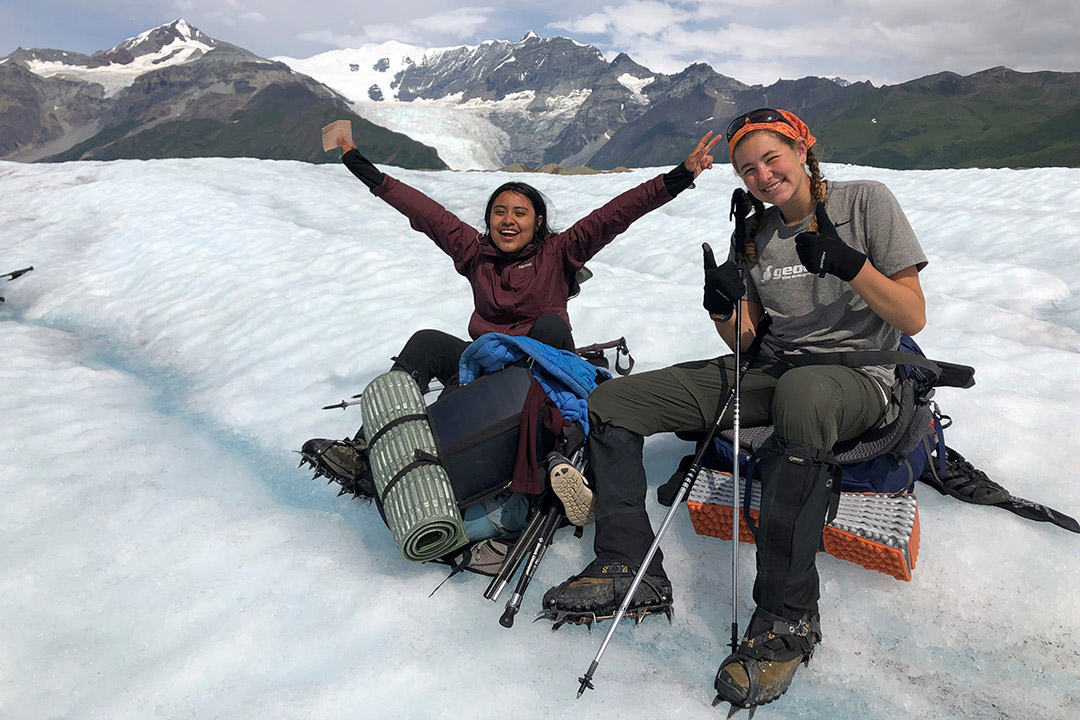Students discover research opportunities on the path to graduation
Undergraduates and graduates benefit from learning through independent research
Olivia Schlichtkrull
A growing number of RIT students are taking on research experiences as part of their RIT education. In the lab, 2024 physics graduate Andres Orio Gonzalez can be found injecting dye solution in a porous medium of 150-micron glass beads to improve visualization under fluorescent microscopes.
Many RIT students are discovering research opportunities on the path to a diploma.
For everyone from first years to master’s students, these independent projects can help cultivate critical thinking, collaboration, and problem-solving skills. Whether it’s late nights spent in a RIT lab or a field study in the mountains, research experiences can be a cutting-edge way for students to prepare for the future.
“Research adds value to an undergraduate education and denotes a healthy university,” said Ryne Raffaelle, RIT vice president for Research and associate provost. “Many RIT undergraduates conduct independent research on the level normally experienced in graduate school, and that gives them an edge over peers from other universities.”
Read about two 2024 graduates who have found success in research.
Freedom to experiment
Olivia Schlichtkrull
Andres Orio Gonzalez, a 2024 physics graduate.
During one of his earliest research experiences, Andres Orio Gonzalez was surprised by how hands off his mentor was initially. Now, graduating with a degree in physics, he is glad that he got to experiment.
“My mentor explained that if she was looking over my shoulder the whole time, then I wouldn’t have been brave enough to make those mistakes that helped me learn,” said Gonzalez, who is from Erie, Pa.
At RIT, Gonzalez joined the Inclusive Excellence Research Fellowship program, which is aimed at helping minority students get research experience. He was paired with Shima Parsa, assistant professor in the School of Physics and Astronomy, where he researched how polymer retention affects the transport properties of porous media.
Through connections at RIT, Gonzalez sought out several ways to fund his undergraduate research experiences, including the federally funded McNair Scholars program, the New York State-funded Collegiate Science and Technology Entry Program (CSTEP), and the NSF-funded Louis Stokes Alliance for Minority Participation (LSAMP) program.
One summer, he also took part an NSF Research Experiences for Undergraduates (REU) program studying nuclear physics at Duke University.
“The most profound moment from that REU was sitting at a table where all are the physicists were Hispanic,” said Gonzalez. “We all feel this responsibility to break down walls and open the doors for younger generations of students like us.”
At RIT, Gonzalez propelled to push for inclusivity in STEM research. He was founding president of the College of Science LGBTQ+ Inclusivity in Science advocacy group.
While completing his capstone project, he found the field of medical physics and joined a University of Rochester Medical Center research project aimed at improving medical imaging. This fall, Gonzalez is going to UCLA to pursue a Ph.D. in the physics and biology in medicine program.
“I see research as unsupervised work where I can mess up and tinker and think about these problems for a long time—and once it all comes together there is a moment where you feel a huge sense of accomplishment,” said Gonzalez. “You are the master of your own work in research.”
Expect the unexpected
Research experiences have taken Margaret Gray, right, a 2024 data science master’s graduate, across campus and across the continent. In 2019, she travelled to the Wrangell Mountains of Alaska to take part in climate-oriented field studies.
Doing research has allowed Margaret Gray to be a hands-on learner.
“There is a real benefit to being able to see the things I’m studying in class actually implemented in the real world,” said Gray, who is a 2024 graduate from the data science master’s degree program. She also completed an applied arts and sciences undergraduate degree from RIT in 2022.
Gray started doing research in high school, analyzing the change of frequency of the 35delG deafness gene in the U.S. population over time. She conducted the research with Gallaudet University, near her hometown of Silver Spring, Md.
“It was cool being able to propose a question and then figure out how I can possibly approach figuring it out,” said Gray. “It was also something I’m passionate about, being a deaf person myself.”
As an undergraduate, Gray worked with the NTID Deaf Health Lab investigating the link between hearing status and executive function as measured through the color trails test. She also ventured off campus, finding a field research program with Evergreen State College (Washington). She spent several weeks collecting profiles of more than 40 stream channels in the Wrangell Mountains of Alaska, helping gather data for future glacial research.
“I’ve learned that research can be messy and you don’t always get the data you are expecting,” said Gray. “You learn how to handle it when something unexpected happens, which can lead to finding new and interesting things.”
As a graduate student, Gray has continued to be an active researcher. She was an NSF-funded trainee with the AWARE-AI program, running studies to investigate differences in trust levels between hearing and deaf/hard-of-hearing adults when working with manufacturing robots.
Her artificial intelligence work tied in nicely with an internship at Excellus BCBS, where she incorporated AI and large language models to expedite the prior authorization process in healthcare. In the future, she hopes to work as a data scientist in healthcare, doing projects that help her Deaf community.










